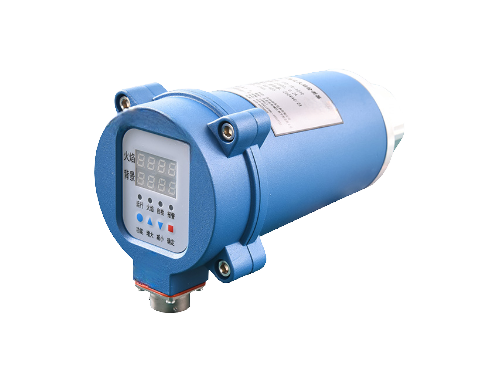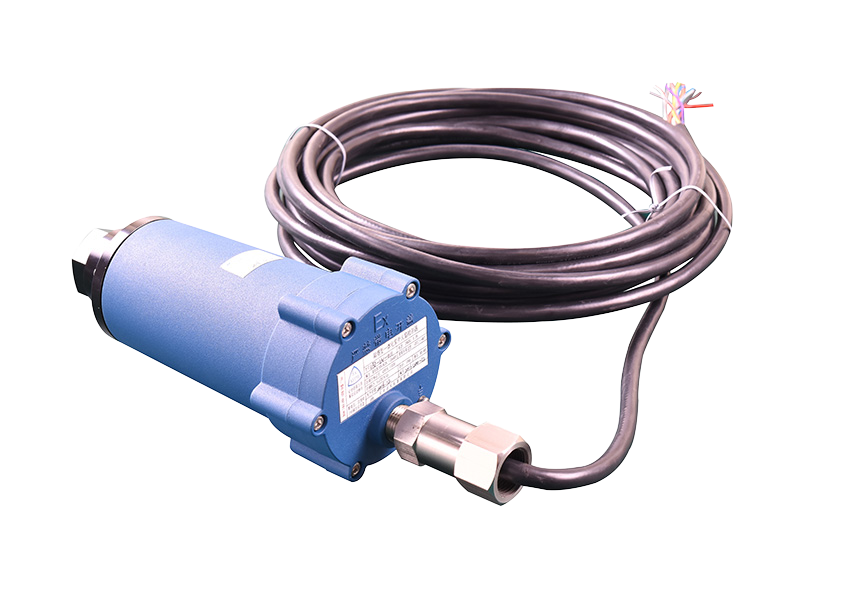BETTER TOUCH BETTER BUSINESS
Contact Sales at KAIDI.
A flame detector, also known as a light-sensitive fire detector, is a type of fire detector sensor used to respond to the light characteristics of a fire, i.e., to detect the intensity of light from a burning flame and the frequency of flickering of the flame. Uv flame detectors are designed to detect invisible light radiation that is visible or not present in the atmosphere at the same time as smoke is produced and heat is emitted when a substance burns.
This point-type infrared flame detector based on pyroelectric principle can be applied to long and short distance multi-band flame detection, has the advantages of fast response speed, long detection distance, large protection area, etc., especially for the hydrocarbon combustion formed by the flame is more sensitive, so it is more suitable for thermal power generation boiler, metallurgy, petrochemical, chemical power station boiler, process heating furnace, city heating boiler, exhaust gas combustion boilers and other places.

Different substances combustion, its emission of red-ultraviolet spectrum varies, but from the flame spectral sketch can be clearly seen in the three flame radiation curve raised part, one of which is the ultraviolet band 0.28um below the part of the infrared band, the other two are respectively 4.3um and 4.6um near the infrared band, in the three bands, the surface of the sunlight radiation curve is exactly in the wave valley position.
The center wavelengths of the filters in the flame detection band are usually near 4.3um and 4.4um, and different bandwidths are designed to detect the mid-infrared wavelength infrared signals in the range of 4.0~4.6μm radiated by CO2 and CO gases released from the combustion flames of hydrocarbons.
In addition, the flame radiation near 3.8um and 5.0um is significantly weaker, commonly used in the flame monitoring channel, auxiliary channel, used to monitor the non-fire hot body radiation, solar radiation (daylight), to avoid interference with false alarms

Precautions for use
Industrial use of flame probe is mostly used in the tri-frequency infrared uv flame detector probe. Probe output signal for 4 ~ 20 mA, this fire prevention system for lightning, sunlight reflection, arc welding, heat objects and other radiation sources produce false alarms have a strong anti-interference. It is characterized by a wide range of flame detection types, early detection of tiny flames, high integration and strong anti-interference.
Although the use of the probe on the lightning, sunlight reflection, arc welding, heat objects, etc. has a strong anti-interference ability, but in the actual use of maintenance, in order to reduce the impact of false alarms on the stability of production, we still need to check the possible interference factors, and as far as possible to avoid. According to the experience, combined with various types of probe manual, it is recommended to pay attention to the following matters in the daily use of maintenance:

1. When there are welding operations on the operating site, carefully make the selection and isolation of the area covered by the flame probe;
2, check and troubleshoot the flame probe 0.9 meters range of lighting fixtures and other heat sources, to prevent the impact of equipment heat;
3, pay attention to the main engine room and turbine unit skid, there are fixed heat source areas, pay attention to the movement of operating personnel may lead to false alarms flame probe (background infrared interference: refers to the fixed heat source interference, such as turbine casing, fin fan cooler, etc., due to the probe on the fixed heat source infrared interference is through the filtering and algorithm to achieve the interference suppression, but when there are people or objects in the fixed heat source and the probe to and fro, the modulated infrared wave generated (The modulated infrared wave generated may cause the probe false alarm);
4, concerned about the impact of the walkie-talkie on the flame probe, it is recommended to try not to use the walkie-talkie within 0.3 meters of the flame probe (send key);
5, check the state of the flame probe cable shielding layer, to prevent broken skin, broken and other conditions, to prevent external electromagnetic interference.
6, in the daily maintenance, pay attention to the detection and self-check probe lens cleaning, especially for self-check lens cleaning. After the lens is contaminated, the intelligent probe will be based on the contamination to amend or compensate for the probe on the fire monitoring algorithm, which may lead to a decrease in the probe's ability to resist interference, resulting in false alarms.
7, preventive maintenance, pay attention to the internal wiring, rain, shielding wire and grounding wire inspection, reasonable shielding wire, grounding wire installation can prevent the impact of external interference factors such as thunder.
We are here to help you! If you close the chatbox, you will automatically receive a response from us via email. Please be sure to leave your contact details so that we can better assist